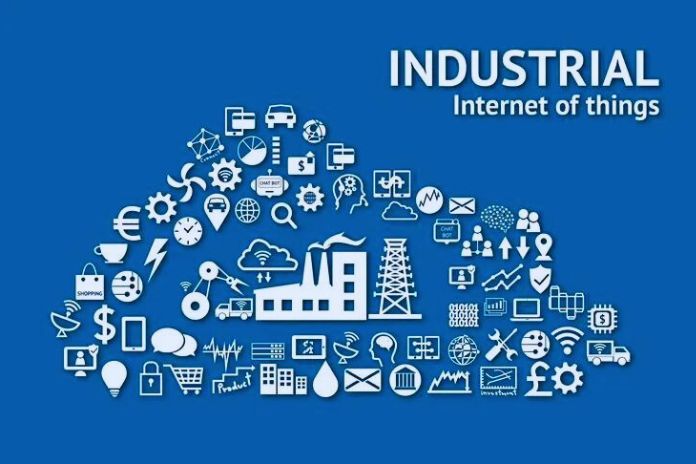What Is Industrial IoT?
The Industrial IoT (or IIoT) is the application of the Internet of Things in industrial processes to make them perform and secure. This Computerized Change innovation has seen developing dynamism, particularly with the presentation of the Business 4.0 idea; the Industrial IoT interfaces existing resources, like machines and sensors, to the Web, making stages for the assortment, chronicling, and investigation of tasks Information, streamlining expenses and item quality. Consequently, at the premise of the IIoT, a few clever items and organizations convey, trading important data to increment business proficiency.
What Are The Key Components For Building An Industrial IoT Architecture?
Typically, IoT Industry platforms and beyond are made up of three parts
- Things: gadgets, resources, and sensors associated with a remote or wired network;
- Network: the means through which the different gadgets are placed in correspondence;
- Cloud: the “place” where all Information is stored and positioned securely to be analyzed and exploited to obtain value.
The “things” create day-to-day Information addressing temperature, area, activity, etc. Thanks to the organization, this little Information solidified and followed in the cloud becomes progressively enhanced over the long run ( huge Information). Enormous Information makes it quicker to comprehend or control cycles and frameworks and settle on essential choices in an ideal way. Through the IIoT, it is simpler to find substantial connections among results, and ensuing activities are given authentic Information coordinated by boundaries (KPI) well defined for that particular business.
The Benefits Of The IIoT
Connected assets that speak the same language provide 360° visibility into what works and how. Establishing an Industrial IoT architecture immediately generates operational efficiencies and revolutionary business models with unlimited potential.
- Reduction of operational block risks: intelligent devices can monitor and even predict potential problems;
- Greater efficiency: less downtime always corresponds to an increase in production performance;
- Efficiency in supplies: the control of the supply chain with IIoT is monitored in every aspect, even that of the supply of components, raw materials, and goods needed in the warehouse;
- Acceleration of time-to-market: thanks to an optimization of industrial processes, products can be placed on the market in less time;
- Better quality: not only more “well-made” goods, but also services. Industrial IoT solutions can also improve the efficiency of the relationships that link supply and demand in the after-sales sector, thus building customer loyalty.
The Challenges Of The Industrial IoT
The Internet of Things exists together with us consistently, yet – like every new innovation – it has angles that make conjunction troublesome. Frequently the assembling organizations wrestling with the decision of choice about whether to introduce Industrial IoT engineering recognize these issues inside:
- Lack of internal resources equipped for dealing with the stage once it is being used. The experts previously well versed in this better approach for “making industry” are as yet not many, and it is much time important to depend on the preparation of the assets currently present (bringing about a defer in the genuine execution of the arrangement);
- Dealing with an enormous volume of Information and understanding what Data is significant is quite serious. It takes time to comprehend which are genuine incentives for the business and which are not. Just experience and investigation lead to additional substantial responses;
- Where are my dates? The cloud is a major assistance for associations that are not generally compelled to buy server farms that “progress in years,” yet this implies that the Information is disjoined as of now, not in the organization. It is all the more mental distress as opposed to a genuine one, as even Information put away in a neighborhood server can endure harm because of catastrophic events, for instance, similarly however much one that is situated in a cloud server
- Incorporating heterogeneous frameworks prompts making designs that are frequently exceptionally complicated and challenging to keep up with. It is, in this manner, fundamental to pick information examination stages that are pretty much as adaptable as conceivable with the development of the business and adjustable as per genuine business needs
- The Industrial IoT drastically changes activities by creating new cycles and everyday working lives for internal and external resources. Normalizing these activities changes the universe of the assignment, making it more capable. Like this, an association that heads down this way should be prepared to advance toward modernization.
Industrial IoT And Internet Of Things: What Are The Differences?
It is easy to confuse the two macro groups, although there are substantial differences. The Internet of Things has the “product” as its definitive objective, while the IIoT has the modern creation environment. By gathering a ton of Information and putting it away in the cloud at high recurrence, the modern IoT changes this Data into enormous Information to further develop the creation cycle and increment the security and the board of hardware and plants. IIoT gadgets have a greater number of elements than “ordinary” gadgets. For example,
- Obstruction in outrageous circumstances (submerged or at exceptionally high temperatures);
- Incredible battery independence to avoid nonstop substitution on huge machines (for instance).
Also Read: IT Trends And Top Prog. Languages With The Best Job Prospects

